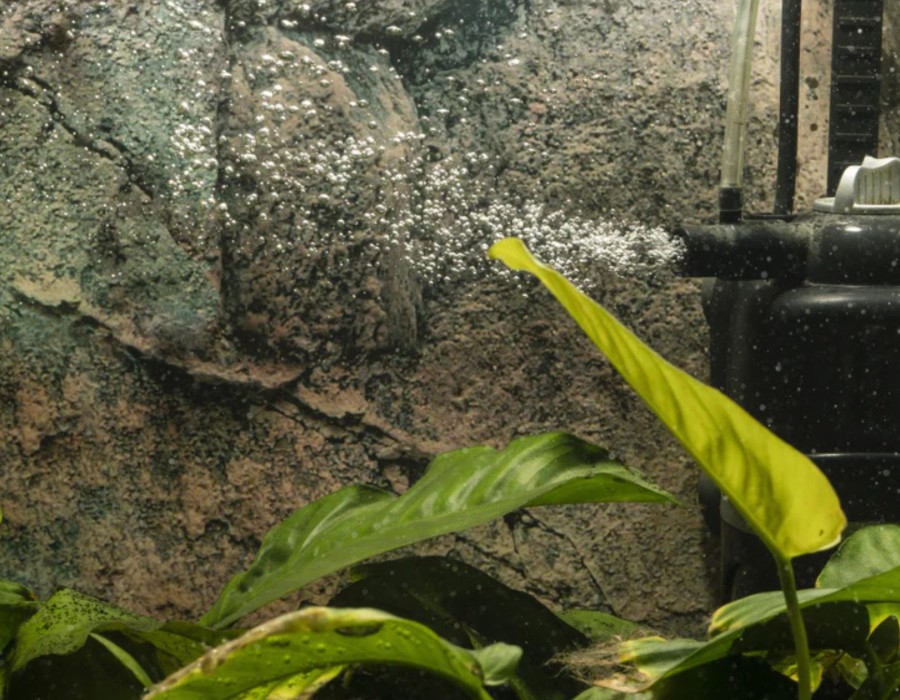Custom aquariums let you go big, bold, and exotic. But before you fill your tank with eye-catching monsters, there’s something every aquarist needs to think about, designing the tank to suit the fish, not the other way around. Exotic freshwater fish like stingrays, Arowanas, and other large species aren’t just pretty to look at. They come with very real care demands.
Let’s talk about the best species for custom setups and what your design needs to keep them happy, healthy, and thriving.
Arowanas: The Centerpiece Giant
Arowanas are showstoppers. They’re sleek, strong swimmers with huge appetites and just as big personalities. These fish need long tanks with plenty of surface space, as they’re top-dwellers and love to cruise near the waterline.
They grow fast, sometimes up to three feet long, so you need a tank that grows with them. Arowanas also jump. A secure, weighted lid is a must. Minimal decorations work best to avoid injuries while swimming.
Most custom fish tank service providers recommend tanks that are at least 250 gallons for one adult Arowana. And if you’re planning tank mates, you’ll want to be careful. These fish can be territorial and aggressive, especially with smaller companions.
Freshwater Stingrays: Bottom Dwellers with Big Space Needs
Freshwater stingrays, like Potamotrygon species, are true aquatic gems. But they need very specific conditions. Sand or ultra-fine substrate is essential to protect their delicate undersides. Sharp gravel is a no-go.
Stingrays love room to roam. That means large footprints and shallow depth are more important than tall tanks. At a minimum, aim for a 300-gallon setup with lots of open bottom space.
Water quality is everything for stingrays. Strong filtration, frequent water changes, and proper oxygen levels are key. They're sensitive to ammonia and nitrate spikes, so the tank setup must support heavy bio-filtration from day one.
Peacock Bass: Big, Bold, and Hungry
If you want something that looks like it came straight from the Amazon, Peacock Bass is a solid pick. These fish grow fast, eat a lot, and get aggressive, especially around feeding time.
They need wide swimming lanes, powerful filtration, and solid tankmates that won’t get swallowed. Smaller fish are simply seen as snacks. It’s best to keep them with fish that are similarly sized and can hold their own.
Peacock Bass require tanks starting at 300 gallons, with powerful pumps to simulate flow. You can also add driftwood and plants on the sides, but don’t overcrowd the middle. They need the space.
Clown Knifefish: Long and Graceful, but Not for Everyone
Clown Knifefish are unusual and mesmerizing, with their ribbon-like bodies and slow, graceful swimming. But don’t let their calm vibe fool you, they can be shy and even a little moody in the wrong environment.
These fish can reach over three feet long, so a custom tank is your only real option. They prefer low lighting and lots of hiding spots. Add caves, overhangs, and soft plants to help them feel secure.
They also need calm tank mates. No fin-nippers or overly aggressive fish. Design-wise, long tanks with soft edges and gentle current work best. Always keep the tank covered, they’re known jumpers.
Custom Tank Design Tips
A great custom fish tank service doesn’t just build for looks. It builds for function. Each species has its own habits, needs, and quirks that need to be supported in the tank design. Here’s what to keep in mind:
- Tank Size: Go bigger than you think you’ll need. Juvenile fish grow fast.
- Shape: Long and wide tanks work better than tall ones for most large freshwater species.
- Filtration: Heavy bio-load means stronger, multi-stage filtration systems.
- Oxygenation: Add air stones or wave makers to keep oxygen levels up.
- Tank Mates: Choose companions that match size, temperament, and activity level.
- Substrate and Decor: Soft sand, smooth rocks, and minimal sharp objects help reduce stress and injury.
- Access Points: Plan for easy maintenance and feeding zones.
Final Thoughts
Keeping exotic freshwater fish is exciting, but it’s not just about picking out cool-looking species. The design of the tank can either support their well-being or create long-term health problems. If you’re serious about going custom, work with a team that understands both fish and filtration.
A professional custom fish tank service will help you make informed decisions, from layout to lighting, and make sure your tank isn’t just a display, but a thriving aquatic environment.





Comments